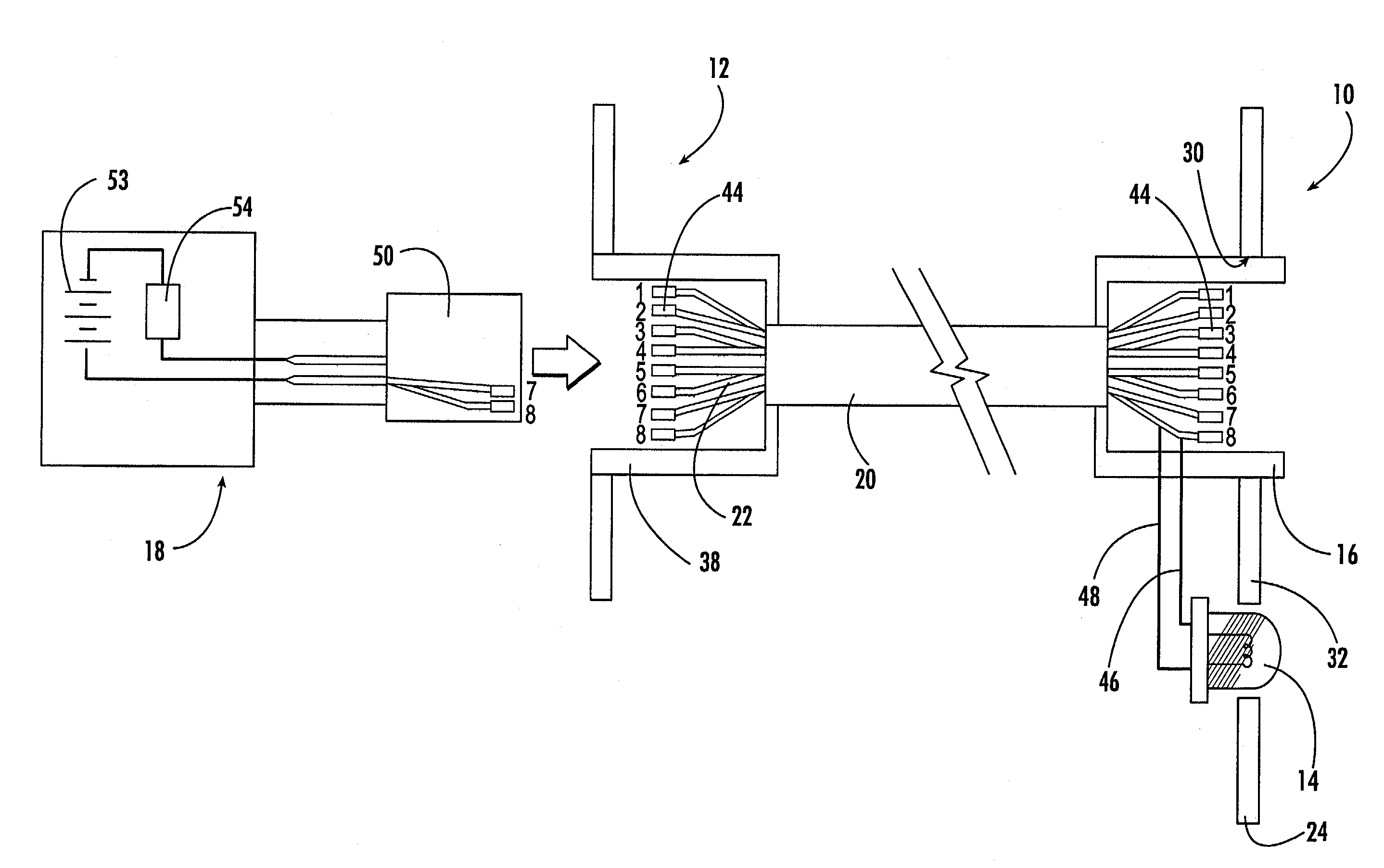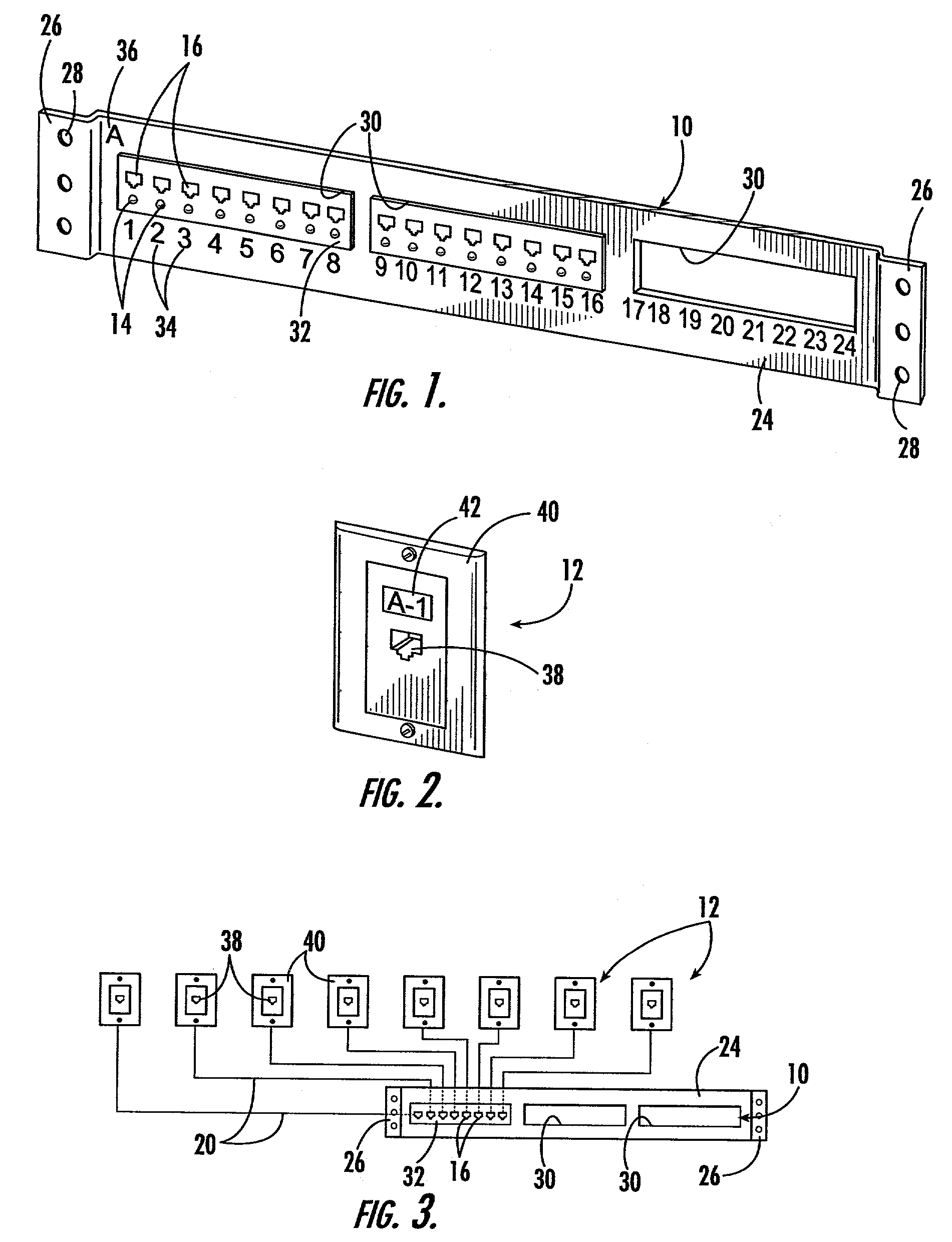Testing assembly and method for identifying network circuits
a network circuit and assembly technology, applied in the direction of testing/measuring connectors, network connectors, coupling device connections, etc., can solve the problems of difficult to distinguish and isolate the cable carrying the tone from all the other cables, process can take days or even weeks to complete, and the technician is more difficult to identify the tested wiring. , the effect of improving the speed and ease of identification
- Summary
- Abstract
- Description
- Claims
- Application Information
AI Technical Summary
Benefits of technology
Problems solved by technology
Method used
Image
Examples
Embodiment Construction
[0019]Referring now to the drawings, the cabling network testing apparatus of the present invention is illustrated in FIGS. 1–4. As will hereinafter be more fully described, the present invention includes testing apparatus for identifying particular cables in a cabling network that includes a network patch panel 10 and several remote wall jack 12 locations. The present invention provides for indicator lamps 14 that are installed in the patch panel device 10 adjacent to each of the patch jacks 16 installed therein to provide positive visual identification of the particular patch jack 16 that corresponds to the remote wall jack 12 location when a test voltage is applied at the remote location. As will be described, the apparatus and method of the present invention provide a simple cable identification system that can be operated more quickly and simply than the methods and apparatuses in the prior art.
[0020]The present invention generally includes two components, a patch panel compone...
PUM
 Login to View More
Login to View More Abstract
Description
Claims
Application Information
 Login to View More
Login to View More - R&D
- Intellectual Property
- Life Sciences
- Materials
- Tech Scout
- Unparalleled Data Quality
- Higher Quality Content
- 60% Fewer Hallucinations
Browse by: Latest US Patents, China's latest patents, Technical Efficacy Thesaurus, Application Domain, Technology Topic, Popular Technical Reports.
© 2025 PatSnap. All rights reserved.Legal|Privacy policy|Modern Slavery Act Transparency Statement|Sitemap|About US| Contact US: help@patsnap.com



